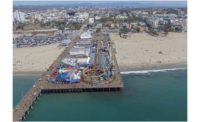
India's government under Prime Minister Narendra Modi is moving forward on plans to develop 100 Smart Cities, despite resistance from the opposition party, which has blocked some key land-acquisition legislation. The new cities likely will be a mix of greenfield development, redevelopment and retrofit projects and are intended to help manage the complexity of large-scale urbanization by increasing efficiency, reducing expenses and improving quality of life.
The 31% of India’s population that currently resides in urban areas contributes more than 60% of the nation's gross national product. That contribution is expected to rise to more than 75% of the GDP by 2030. The Ministry of Urban Development, which is leading the smart-cities program, says supporting such growth will require cities that are at "the intersect between competitiveness, capital and sustainability. Smart cities should be able to provide good infrastructure, such as water, sanitation, reliable utility services [and] health care, attract investments [and have] transparent processes that make it easy to run commercial activities."
It is proposed that the 100 smart cities be selected in three phases, with 20 this year and 40 each in the following two years. Already, more than 10 cities are being developed as smart cities, several with special economic zones and tax breaks to attract foreign investment, as the projects will be based on public-private partnerships.
Earlier this year, India and the U.S. signed three memoranda of understanding to collaborate in developing smart cities near the cities of Allahabad, Ajmer and Visakhapatnam. The U.S. will assist in project planning, infrastructure development, feasibility studies and capacity-building. The respective state governments of those cities will provide resources, such as technical information and data related to planning, staff, logistical and travel support, and budgetary resources.
Development already has begun on at least 10 cities. The western state of Gujarat recently laid the foundation of its third smart city, in Surat, in the form of the 15-sq-mile Diamond Research and Mercantile (DREAM) City. Within the city, about 580 acres have been set aside for a diamond-trading hub. The Netherlands, where Amsterdam is an international center for the diamond trade, has shown interest in the PPP model there.
The first greenfield smart city, Gujarat International Finance Tec-City (GIFT), is a dream project of Prime Minister Modi. It is planned as a financial services hub and “is not just about technology. It is about smart planning, design, execution, development, operations and management,” says Ramakant Jha, group CEO of GIFT.
With a proposed 62 million sq ft of built-up area, GIFT is planned in three phases. The first phase comprises 12.6 million sq ft and has been allocated $1.4 billion. Sweden’s Ministry of Urban Development, as well as Ikea, Volvo, Ericsson, Envac and Scania, have said they will collaborate with local authorities in Gujarat on green solutions for the project.



Post a comment to this article
Report Abusive Comment